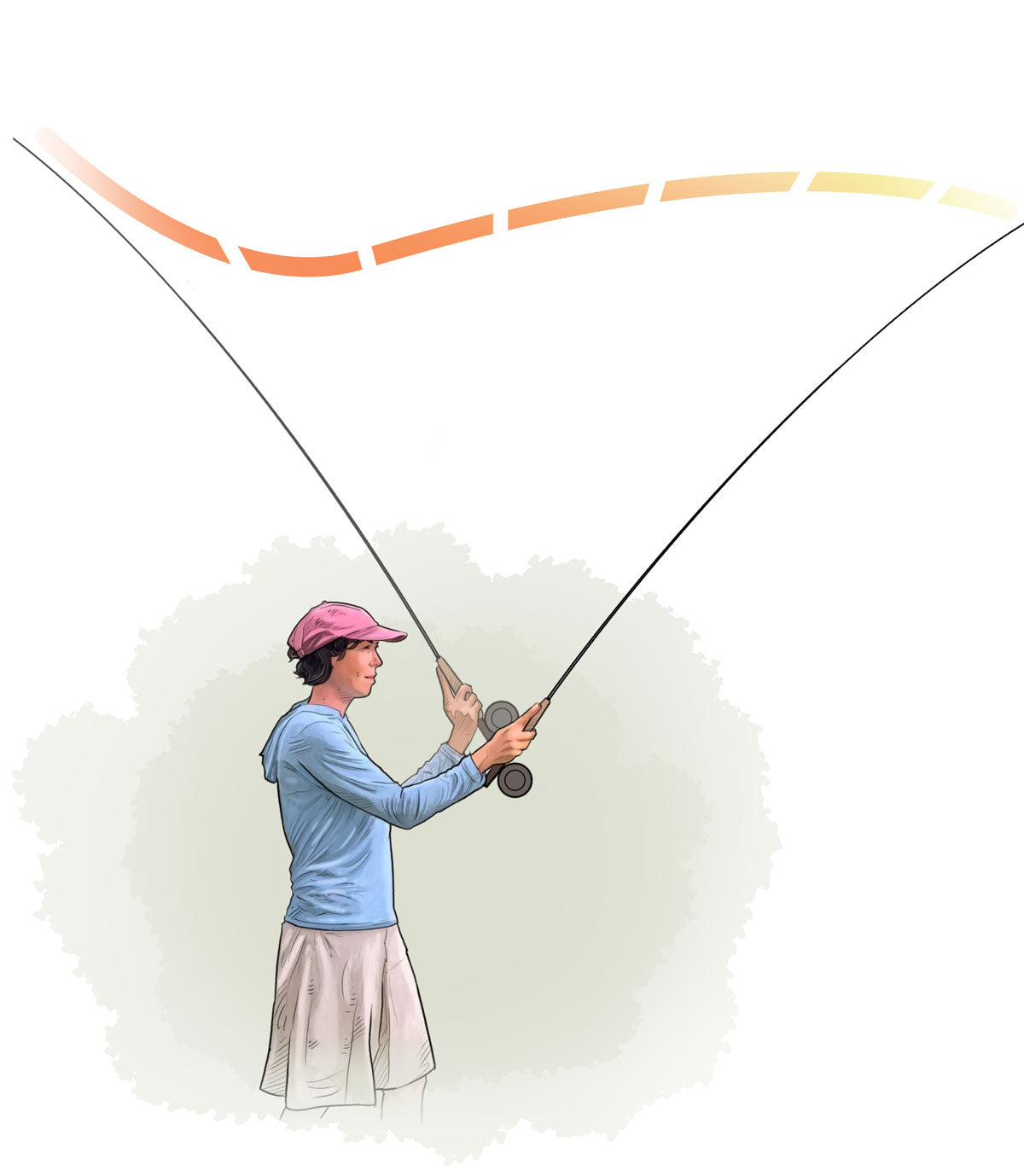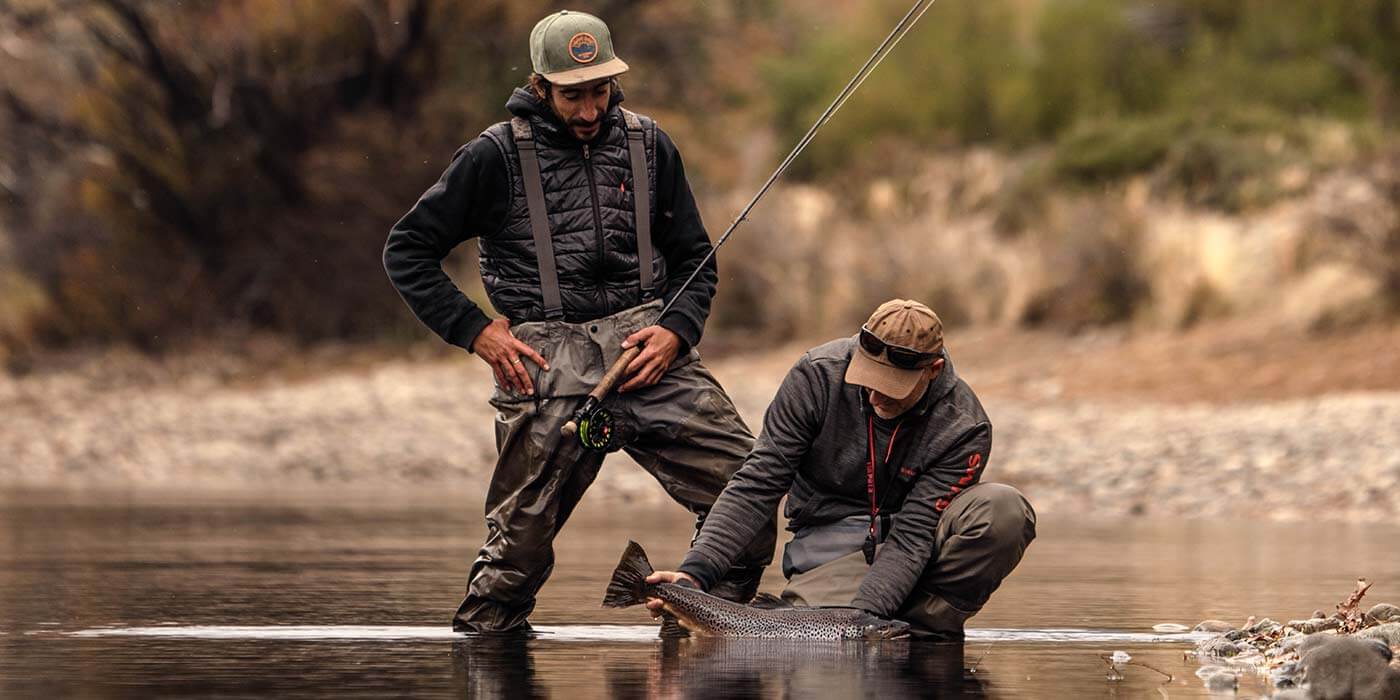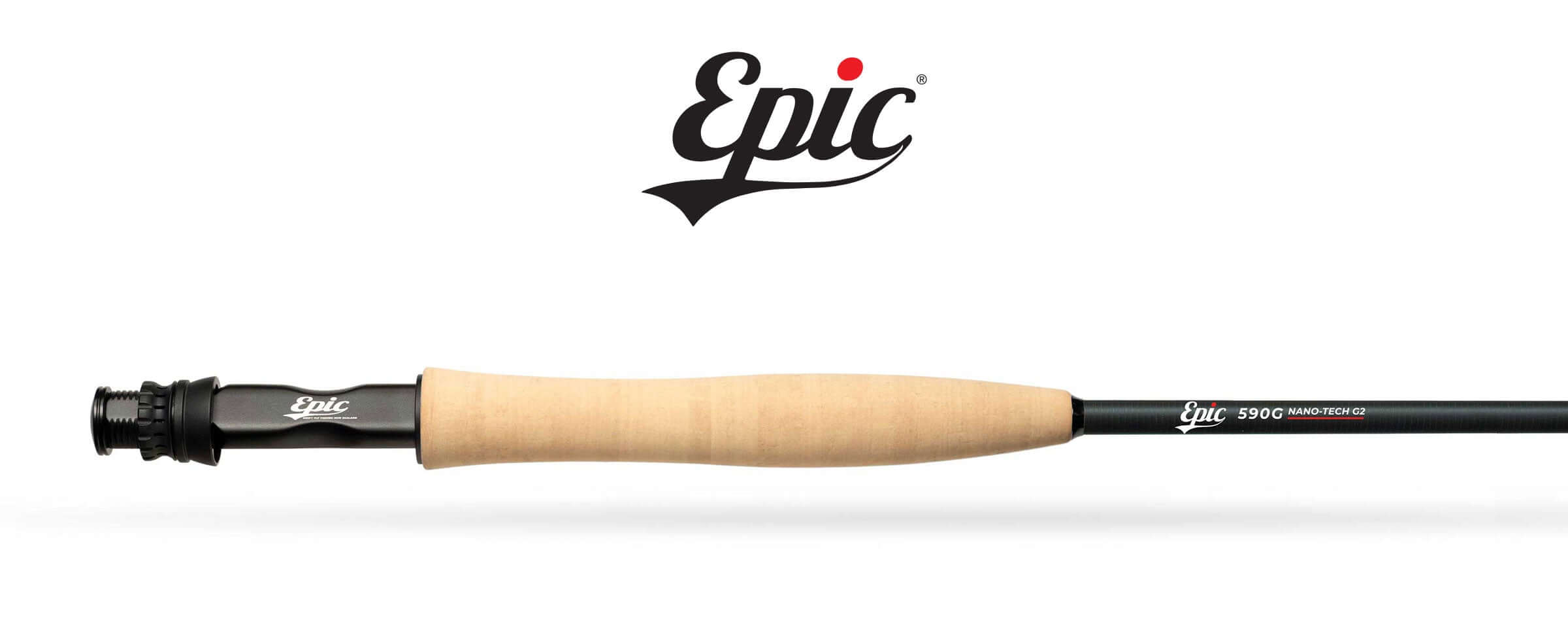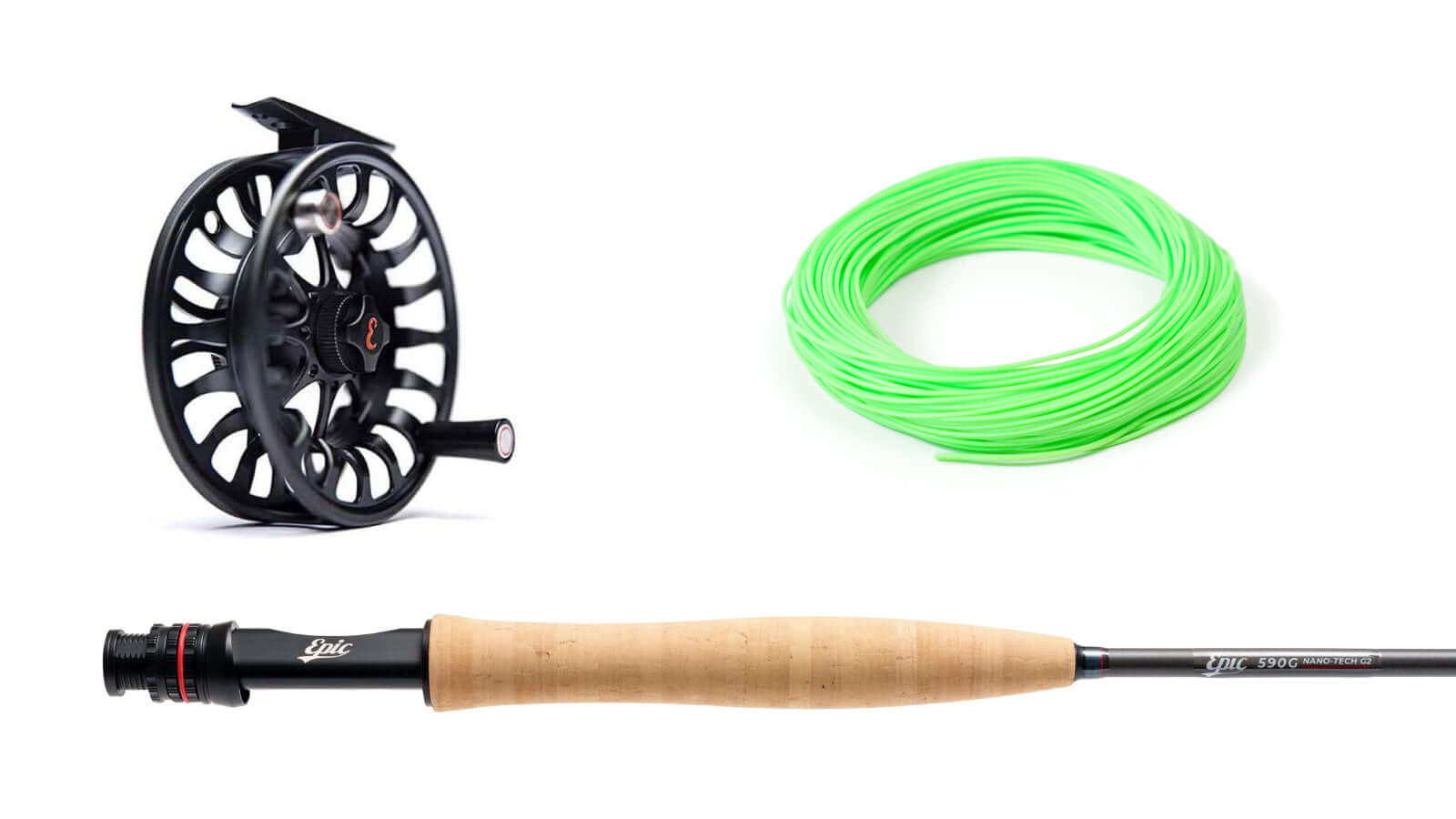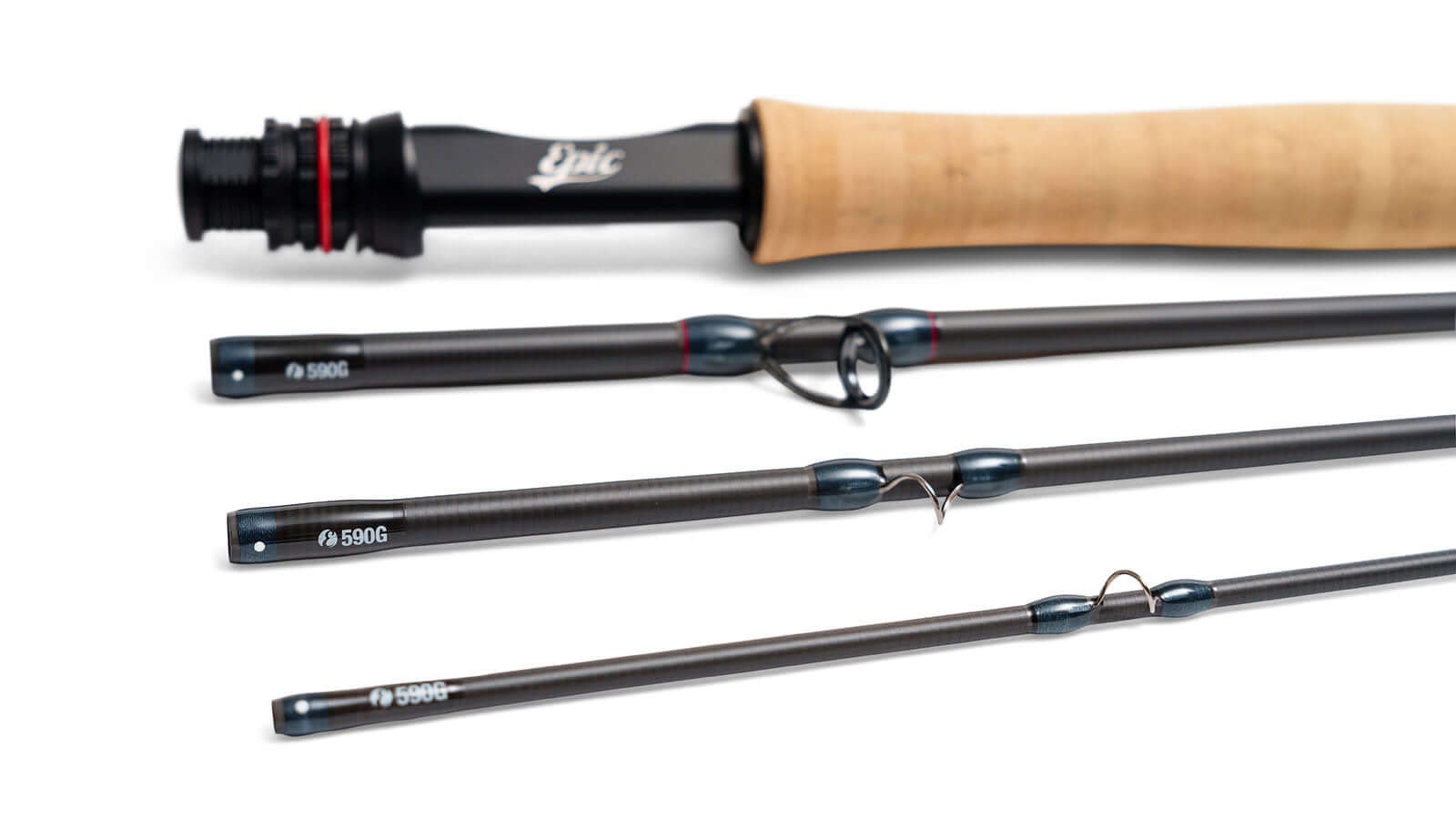Fly Casting - How to fix your tailing loops - 2023 revision
While first published in 2021, we've updated this post to incorporate practical teaching observations from Joe Mahler and a couple of his fine illustrations. Enjoy!
Carl says...
There's been a lot said about tailing loops (often referred to as "wind knots") in the past - and more to come I'm sure. Much of it is just wrong and postulated by casters that simply don’t know any better. The topic can be an incredibly complex one.
Having seen a few tails and created more than my fair share - most entirely involuntarily - I think it best to keep things simple. After-all, we're all about fly fishing rather than any in-depth analysis of casting physics.
Fly fishing and fly casting are most certainly the sport of exceptions and in order to attempt to explain anything in fly casting you tend to have to generalise - and that’s what i’m about to do.
There are all sorts of potential, “Yeah but’s" - “What about when’s” and “sometimes” that can be thrown into the mix - but most often, and for most of us fly anglers this is the go….
This is a Tailing Loop

What is a tailing Loop?
The
FFI definition of a tailing loop and that which seems to be agreed upon by most qualified fly casting instructors is that a tailing loop sees the fly line crossing over itself AND back again. i.e
twice.
A crossed line is not a tailing loop by definition. It's all sorts of other things. An underslung loop, a tight loop cast out of plane, a loop commonly seen on spey casters - all sorts - but it's not a tailing loop. See below.
THIS IS NOT A TAILING LOOP

Joe says...
“I have a terrible tailing loop.” I’ve heard those words many times over my years of teaching fly casting. I hear the dread in students’ voices, as though they have been given a terminal diagnosis. I rarely use the phrase when teaching. I’ve heard students call them “Curly Qs” or “Little Twisties,” or “Pig Tails,” and I think are fitting names. Of course, there are several variations of these “Curly Qs’” and those who want to dig into fly casting on a molecular level will be interested in tailing loops, trailing loops and others. But most just want them to go away.
What makes tailing loops.
Simple - it's always the path the rod tip makes. It can't be anything else. And if you doubt that think about the point of control between the fly line, rod and caster - it's the tip of the
fly rod. End of story.
Most diagrams you’ll see of tip paths depicting the cause of tails are very much exaggerated - including mine here. The effect is subtle, while you’ll certainly see the resultant tail, you'll most likely not actually see the cause in the tip path.
What does the rod tip do to cause a tailing loop?
Simply, the rod tip dips down and then rises back up again. And it needs to do both those things during the casting stroke. Dipping down isn’t the issue, the dip then rise is what does the damage. Most often this variance can be extremely subtle and almost impossible to see and can be most anywhere in the casting stoke. In my experience most often either very early - or very late in the stroke.
Joe says...
I think the obsession with casting ultra-tight loops has furthered the cause of the tailing loop. A tailing loop is easier to cure than it is to explain.
It reminds me of a collapsed lung- it just needs air. Too much power, too fast causes the tip of the rod to flex and unless there is increasing speed, the rod tip unbends, forming the infamous tailing loop. You can cast as hard and as fast as you want, if you start the stroke smoothly. Abrupt and early hauls are tantamount to too much power and are often the culprit. The tailing loop most spoken of occurs on the forward stroke, but also possible on a back cast.
What causes a tailing loop or "wind knot"?
Ok, given we've established that a tailing loop is the effect of the rod tip dipping down and then rising back up again. There are actually many things that the fly caster can do that will result in a tailing loop, common teaching dogma cites the following as the most common causes:
- Poor power application / abrupt power - shocking the rod at the start of the stroke. Or horsing the rod at the very end (throwing)
- Too narrow a casting arc for the amount of line past rod tip
- Breaking the 180 degree rule (high back cast + high forward cast)
- Creep (too narrow a casting arc and often abrupt power application)
- Finishing the haul too soon
... and just about anything else you can come up with.
In short, most tailing loops are caused by problems with power application. e.g, too narrow a casting arc simply means you need to pack all the power and acceleration required to keep the line aerialized into a very short stroke, which would usually result in a tail. Apply the same power over a longer stroke and your tail will disappear.
How to fix your tailing loop problem
Be smooth. If you see tails, smooth out how you apply power. Often, simply buttoning off the power will effect a fix. And / or make a longer stoke.
Joe says...
If a tailing loop is the disease, drift is the penicillin. A bit of drift – even a few inches- takes the edge off and efficiently lengthens the stroke.
Experiment with wrist rotation, focus on making the turnover later and later. Maybe the best way to understand tailing loops is learning how to form them.
Try this drill. Make three false casts- the first two as smoothly as possible, then “punch” the third one! Now, untangle your line and do it again.
Try different stroke lengths, too short and you will surely form a tailing loop. Another tip is to make sure that the line between your line hand and stripping guide is absolutely taught throughout the cast, this alone will slow your cast in a useful way.

Joe Mahler is one of the USA's leading fly casting instructors and author and illustrator of “Essential Knots & Rigs for Trout” and “Essential Knots & Rigs for Salt Water”. You can Book a fly casting lesson with Joe via his website
here
Carl McNeil is a Master Fly Casting Instructor, Founder of Epic Rods, and probably talks too much

















